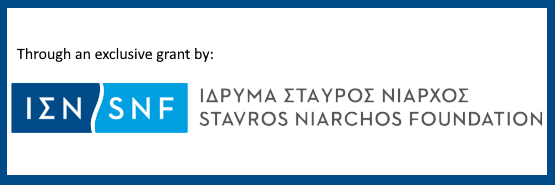Tuesday 11 June 2019 16:00 – 17:00 A. Payatakes Seminar Room
” FOG-1 interacts with CTCF and the cohesin complex in erythroid cells”
Dr. Grigorios Tsaknakis Institute of Molecular Biology and Biotechnology (IMBB)
Abstract
The Friend of GATA-1 (FOG) family of zinc finger proteins play essential roles in development and cell differentiation through physical interaction with GATA transcription factors. The specific interaction between FOG-1, a non-DNA binding, multi-zinc finger transcriptional co-factor, and GATA-1 is necessary for lineage specification towards the erythroid and megakaryocytic cell fates and is involved in both transcriptional activation and repression, potentially in the context of chromatin architecture reorganization. More specifically, FOG-1 and GATA-1 have been implicated in the spatial re-organization of ‘looped’ chromatin domains when activating the β-globin locus or when repressing the Kit locus during murine erythroid differentiation. In investigating the molecular basis of FOG-1/GATA1 functions, we used a biotinylation tagging approach in mouse erythroleukemic cells followed by mass spectrometry in order to characterize novel FOG-1 protein complexes. Apart from the known multi-protein complexes that FOG-1 recruits in association with GATA-1, such as the nucleosome remodeling domain (NuRD) complex and Cterminal binding protein (CTBP)-containing complex, we identified FOG-1 to be interacting with the transcriptional factor CTCF and the cohesin complex. Cohesins and CTCF are known to be implicated in the 3-dimensional organization of the genome and in delineating subdomains of gene activity in nuclear space. Validation experiments including streptavidin pulldown assays, immunoprecipitations and ChIP-reChIP assays in the mouse β-globin and c-Kit loci have confirmed these interactions. Moreover, we have recently generated ChIP-seq data for FOG-1 genome-wide occupancy profile in mouse erythroid cells and these data demonstrate overlapping as well as distinct patterns with GATA-1, CTCF and cohesins. These findings raise the intriguing prospect of functional crosstalk between a lineage-specific transcriptional complex (GATA1/FOG-1) and architectural transcription factors and structural chromosomal proteins in regulating cellspecific gene expression programs in differentiation.

